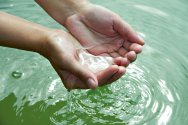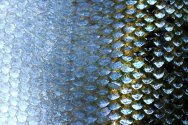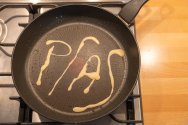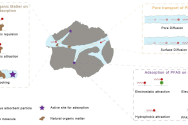
Dossier
PFAS: detection, solutions and safe alternatives
In 2021, the RIVM found that PFAS are now found everywhere in the environment: in the soil, water, air, in plants, animals and humans. In 2022, exposure to PFAS through food and drinking water in the Netherlands exceeded the safe limits set by the European Food Safety Authority (EFSA). Long-term exposure to PFAS has been linked to hormonal imbalances, developmental problems in children, immune system problems, liver and kidney damage, raised cholesterol levels and cancer.
What are PFAS?
PFAS (Per and Polyfluoroalkyl Substances) are man-made substances with specific characteristics such as water repellency, resistance to heat, oil and fats, chemical stability, and electrical insulation. These characteristics mean that PFAS are used in a huge variety of products both in industrial settings and in the home, for everything from foam fire extinguishers to medicines, non-stick pans to reactor vessels, and raincoats to electronic components.
PFAS in environment and food chain
PFAS are potentially toxic and they barely get broken down in the environment, if at all. This means they accumulate in the environment and in living organisms, which can lead to health problems in humans and animals. PFAS compounds vary, partly in the extent to which they attach to other substances: some PFAS are more water-soluble, others more fat-soluble. These kinds of properties determine how the substance spreads through the environment, where it accumulates, and how it moves through the food chain. Wageningen researchers are studying the extent to which PFAS is present in water and water bottoms, can be taken up and passed on in benthic animals and fish, and the extent to which it accumulates in birds, mammals or humans. The current and previous studies in the Westerschelde are an example of this.
Growing need for alternatives
The European Commission currently works on the regulation of PFAS, which have been designated as substances of very high concern (SVHC). Alongside these regulatory changes, there’s also growing public pressure to come up with alternatives. Producers of PFAS or of products that contain PFAS will need to find safe alternatives. But right now, few alternatives are available. Part of the issue is that there are thousands of different types of PFAS, with a variety of different chemical characteristics and degrees of toxicity.
Besides PFAS detection and monitoring, Wageningen University & Research (WUR) conducts research into safe alternatives and sustainable ways to clean up current PFAS pollution. In doing so, we have identified three focus areas:
Detecting and monitoring PFAS
PFAS have been on the market for more than 50 years and they find their way
into the environment through industrial emissions, waste processing and the use
of products that contain the substances. We know that they can be spread
through the air, soil and surface water.
Read more
Reducing PFAS pollution
PFAS contain very strong carbon-fluorine bonds, and it’s these that account for their strong performance as materials, but also prevent them from being easily broken down. This is what makes it difficult to clear up PFAS pollution.
Read more
Sustainable and safe alternatives to PFAS
The development of alternatives to PFAS isn’t straightforward because there are so many types of PFAS, each with their own unique functionality and a combination of characteristics not found in nature. People have also become accustomed to the functionalities offered by products containing PFAS, so they expect any alternatives to perform in a similar way, whether it’s a household or industrial product.
Read more
Wageningen University & Research is providing support to the industrial sector for the development of renewable products that are non-hazardous as well as biodegradable and/or recyclable through mechanical, biocatalytic or chemical methods.
WUR is working on this in accordance with the ‘safe and sustainable by design’ principles. These principles call for circularity, safety and health to be embedded in product development from the start and throughout the design process. In practice this might include pre-screening for toxicity, and using artificial intelligence for modelling and predicting functionality. This results in products and processes that are safer for both people and the environment.
For a significant proportion of products that currently contain PFAS, there still aren’t any substitutes available that don’t compromise on quality. Over the next four years, as part of the forthcoming TOSS project – funded by the Dutch Research Council (NWO) – we will be working with a variety of partners from universities, the government and industry on the biobased production of alternatives to PFAS, such as the microbiological production of lanoline (wool fat).
Publications
-
The Critical Role of Commercial Analytical Reference Standards in the Control of Chemical Risks : The Case of PFAS and Ways Forward
Environmental Health Perspectives (2025), Volume: 133, Issue: 1 - ISSN 0091-6765 -
Toxicological effects of per- and polyfluoroalkyl substances (PFASs) on earthworms : Progress and prospects
Applied Soil Ecology (2025), Volume: 206 - ISSN 0929-1393 -
Effect of polymeric matrix in anion-exchange membranes on nitrate-chloride separations
Separation and Purification Technology (2025), Volume: 355 - ISSN 1383-5866 -
Kinetic and isotherm study for the adsorption of per- and polyfluoroalkyl substances (PFAS) on activated carbon in the low ng/L range
Chemosphere (2025), Volume: 370 - ISSN 0045-6535 -
Enhancing electrochemical reductive defluorination of PFASs using ZIF-67 modified cathode : Mechanistic insights and performance optimization
Water Research (2025), Volume: 268, Issue: A - ISSN 0043-1354




